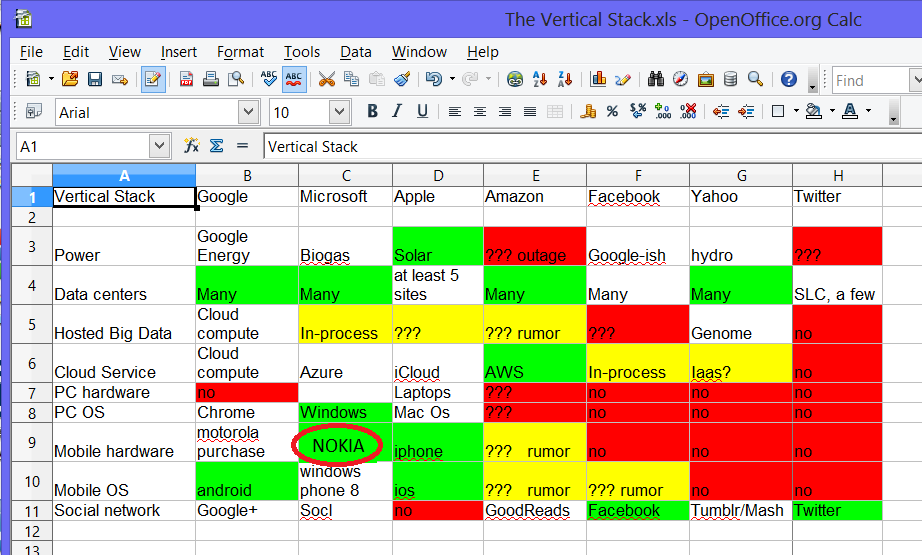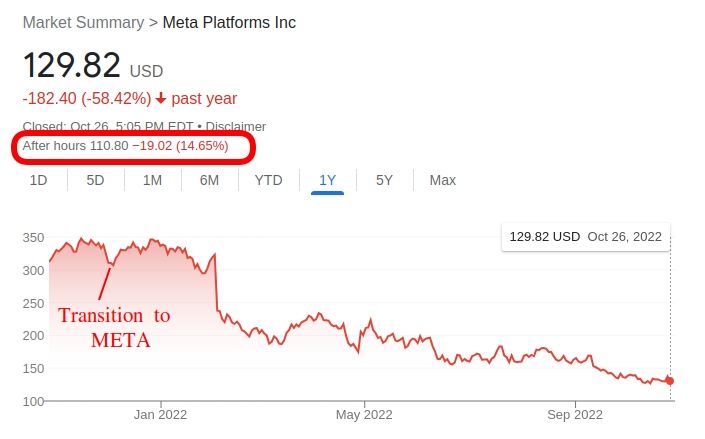I wrote "The Vertical Web" in 2013. I presumed the IT industry will enter a saturation and consolidation phase similar to the automobile industry of the 1930s and the largest IT companies will merge, fail or assimilate. I used only an analysis of business strategy, no quantitative data like ROI, debt ratios, stock price, etc. Here's my original spreadsheet...

One prediction panned out this week from Twitter's acquisition by Elon Musk. In 2013, Twitter was weakest with no competitive strategy and was a likely acquisition target.
Today, a second prediction came closer to fulfillment. I identified Yahoo and Facebook as the other weakest players. Facebook (now Meta) stock has fallen 72% this year, lost $230 billion in market cap and is losing $3 billion per quarter. Zuckerberg's ego and lack of real-life experience led the company into an abyss. You didn't let me down, Zuck!

Back to the spreadsheet. For twenty years, the top companies had a strategy of vertical integration. I suspect Zuckerberg recognized this and thought he could leapfrog past it to a second innovation, the MetaVerse. In the olden days, this was called "Second System Effect".
"The second-system effect or second-system syndrome is the tendency of small, elegant, and successful systems to be succeeded by over-engineered, bloated systems, due to inflated expectations and overconfidence"
An original, lean but flawed success is often followed by a second project crippled by ego, perfectionism and overcompensation.
Note my prediction of large layoffs by the major IT companies during a consolidation phase. This year's reductions: 45% at Twitter, 15% at Facebook and stock down 71%, 100K at Amazon and stock down 35%, impending layoffs at Microsoft (down 30%), Google (down 37%), Amazon (down 50%) and Apple (down 20%). The true fix for unemployment is a lower workweek to redistribute a shrinking amount of work, demonstrable by two linear equations I derived fifteen years ago.



Comments